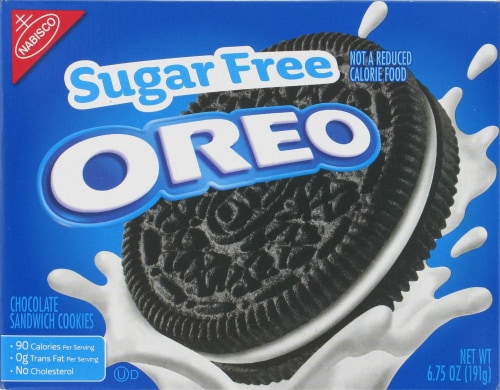
Europe, Boring Until it's Not
-
Fife

- Posts: 15157
- Joined: Wed Nov 30, 2016 9:47 am
-
DBTrek

- Posts: 12241
- Joined: Wed Jan 25, 2017 7:04 pm
Re: Europe, Boring Until it's Not
No, I agree with consumers being informed on the content of anything they plan to ingest. Ingredients are content. Calories are content. GMO/Not GMO is content. But "Government estimation of carbon used to produce/transport/whatever" is not content. It's spin, and as such has earned no place on a food label.Speaker to Animals wrote: Sat Dec 15, 2018 3:05 pm Just because you do not find the information useless does not imply the rest of us feel the same way.
I also find great utility in the nutrition label and ingredient list. Lots of fatties out there never read the nutrition label and do not care. Should I lose nutrition information and honest ingredient information because some obeast is offended by calorie counts as well?
"Hey varmints, don't mess with a guy that's riding a buffalo"
-
Speaker to Animals

- Posts: 38685
- Joined: Wed Nov 30, 2016 5:59 pm
Re: Europe, Boring Until it's Not
"Government estimation of carbon used to produce/transport/whatever" is your nonsensical term.DBTrek wrote: Sat Dec 15, 2018 3:19 pmNo, I agree with consumers being informed on the content of anything they plan to ingest. Ingredients are content. Calories are content. GMO/Not GMO is content. But "Government estimation of carbon used to produce/transport/whatever" is not content. It's spin, and as such has earned no place on a food label.Speaker to Animals wrote: Sat Dec 15, 2018 3:05 pm Just because you do not find the information useless does not imply the rest of us feel the same way.
I also find great utility in the nutrition label and ingredient list. Lots of fatties out there never read the nutrition label and do not care. Should I lose nutrition information and honest ingredient information because some obeast is offended by calorie counts as well?
Calculating an estimate of carbon usage is about as accurate as the estimate of saturated fats contained in the package. It's not perfectly accurate, but it's a good estimate and serves a useful purpose for some people. If you don't care about trying to reduce your carbon footprint, or even being aware of it, then just ignore the number.
Why you would get outraged about a number printed on your Blue Moon six-pack is beyond me. You failed to explain how this should matter to you at all. Really, they probably should put a label on beer so you can clearly tell the difference between beer for women and beer for men.
-
Fife

- Posts: 15157
- Joined: Wed Nov 30, 2016 9:47 am
-
heydaralon
- Posts: 7571
- Joined: Thu Mar 16, 2017 7:54 pm
Re: Europe, Boring Until it's Not
Speaker, if something has carbon in it, that means it is organic. That is the actual definition. Therefore, any and all foods are organic by default. Since nutritionists on television have explained that organic food is healthy, anything carbon based thing you eat is organic and healthy. Hydrochloric Acid does not contain carbon, and is thus not organic. A nutritional label in this instance would kill you, because it would merely say that it does not have any calories, which might make you think it was something you could eat to lose weight. Its terrifying to think about how dangerous labels are. Labels in general are bad. I don't like to box people in by labelling them, nor do I like to box in compounds by labelling them organic or inorganic.
Shikata ga nai
-
DBTrek

- Posts: 12241
- Joined: Wed Jan 25, 2017 7:04 pm
Re: Europe, Boring Until it's Not
This is where you're wrong. Calculating a carbon footprint is considerably more subjective than calculating grams of saturated fat. There error rate on calculating saturated fats is going to be relatively small given the few factors contributing to that value. Carbon footprint has exponentially more factors affecting it, and therefore will reflect inaccuracies several magnitudes greater than any nutritional data. In fact, the error rate on the carbon footprint value is going to be so inaccurate as to be a largely useless number for anything except influencing consumer sentiment.Speaker to Animals wrote: Sat Dec 15, 2018 3:23 pm Calculating an estimate of carbon usage is about as accurate as the estimate of saturated fats contained in the package. It's not perfectly accurate, but it's a good estimate and serves a useful purpose for some people.
So your question is actually "What's your problem with the government mandating that a wildly inaccurate carbon scoring system be labeled on food", and my answer is "It's wildly inaccurate".
/shrug
"Hey varmints, don't mess with a guy that's riding a buffalo"
-
Speaker to Animals

- Posts: 38685
- Joined: Wed Nov 30, 2016 5:59 pm
Re: Europe, Boring Until it's Not
It literally involves adding the carbon footprints of your inputs to the carbon emissions in your manufacturing process. That's it.
-
Speaker to Animals

- Posts: 38685
- Joined: Wed Nov 30, 2016 5:59 pm
Re: Europe, Boring Until it's Not
Let's take a notepad for example.
A lumber company can easily estimate the average carbon emissions per log delivered to a mill.
A paper mill can easily estimate the average carbon emissions in the paper manufacturing process (actually probably considerable) and add that to the number provided by the lumber company.
The Notepad company buys the paper and gets that number from them. They calculate what the carbon footprint is to manufacture a notebook with the paper inputs, including packaging and average distribution emissions, and print that on the packaging label.
Why is that rocket science to you but somehow you think calculating the average saturated fat in a product is easier?
A lumber company can easily estimate the average carbon emissions per log delivered to a mill.
A paper mill can easily estimate the average carbon emissions in the paper manufacturing process (actually probably considerable) and add that to the number provided by the lumber company.
The Notepad company buys the paper and gets that number from them. They calculate what the carbon footprint is to manufacture a notebook with the paper inputs, including packaging and average distribution emissions, and print that on the packaging label.
Why is that rocket science to you but somehow you think calculating the average saturated fat in a product is easier?
-
Fife

- Posts: 15157
- Joined: Wed Nov 30, 2016 9:47 am
-
DBTrek

- Posts: 12241
- Joined: Wed Jan 25, 2017 7:04 pm
Re: Europe, Boring Until it's Not
In a world where global weather, soil quality, greenhouse gas emissions from growing, rearing, farming, processing, transporting, and storing food all remain absolutely static, it might be that simple.Speaker to Animals wrote: Sat Dec 15, 2018 3:47 pm It literally involves adding the carbon footprints of your inputs to the carbon emissions in your manufacturing process. That's it.
In our world where each of those factors will be variable over even short periods of time, the idea that you can crunch a number for dummies that actually represents anything is laughable. The number will be largely meaningless, and even worse, used as a weapon to influence winners and losers in the marketplace.
"Hey varmints, don't mess with a guy that's riding a buffalo"


